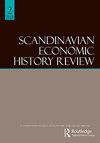伪造卡特尔。跨大西洋视角下的商业勾结和两次世界大战之间的铜工业(1918–1940)
IF 0.5
Q4 ECONOMICS
引用次数: 1
摘要
摘要本文通过关注当时主要的新加入者之一上加丹加小联盟(UHMK),考察了两次世界大战期间国际铜卡特尔的形成和活动。卡特尔并没有将两次世界大战之间的铜卡特尔视为美国铜工业崛起的表现,而是通过吸收新的进入,逐渐反映出全球范围内的生产扩张。新进入者对建立铜出口商公司(CEI)和国际铜卡特尔(ICC)卡特尔至关重要。此外,从国家政策的角度考察了铜卡特尔的形成和组织。有人认为,美国和欧洲的政府都欢迎或容忍卡特尔,只要它们能够通过监管竞争为国内就业提供安全和社会稳定。随着出口卡特尔CEI逐渐转变为生产配额卡特尔,这些论点甚至允许企业突破法律认可的界限。因此,直到1932年,铜卡特尔一直是保护主义的替代品。此后,公司转向了更足智多谋的解决方案,以规避美国的反垄断立法和保护主义,从而形成了依赖于美国企业非正式和间接参与的国际商会。缩写:UMHK:Union Minière du Haut Katanga;SGM:法国矿工协会;CEA:铜出口协会;CEI:铜出口商股份有限公司。;ICC:国际铜卡特尔;ARA 1:Algemeen Rijksarchief/Royaume档案馆1,Ruisbroekstraat 21000 Brussel;ARA 2:Algemeen Rijksarchief/Royaume档案馆2,档案馆Joseph Cuvelier,Hopstraat 26-28,1000 Brussel本文章由计算机程序翻译,如有差异,请以英文原文为准。
Forging cartels. A transatlantic perspective on business collusion and the interwar copper industry (1918–1940)
ABSTRACT This article examines the formation and activities of international copper cartels during the interwar period by focusing on the Union Minière du Haut Katanga (UHMK), one of the principal new entrants at that time. Rather than seeing interwar copper cartels as an expression of the rise of the American copper industry, cartels gradually came to reflect the expansion of production world-wide by absorbing new entry. New entrants were crucial in setting up the Copper Exporters Inc (CEI) and International Copper Cartel (ICC) cartels. In addition, the formation and organisation of copper cartels are examined from the point of view of state policies. It is argued that governments, both in the US as well as in Europe, welcomed or tolerated cartels so long as they could provide security and social stability for domestic employment by regulating competition. Such arguments even allowed firms to push the boundaries of what was legally accepted, as the export cartel CEI gradually transformed into a production quota cartel. Copper cartels thereby functioned as alternatives to protectionism until 1932. Thereafter, firms turned to more resourceful solutions to circumvent American antitrust legislation and protectionism, resulting in the ICC, which depended upon informal and indirect American business participation. Abbreviations: UMHK: Union Minière du Haut Katanga; SGM: Société Générale des Minerais; CEA: Copper Export Association; CEI: Copper Exporters Inc.; ICC: International Copper Cartel; ARA 1: Algemeen Rijksarchief/Archives du Royaume 1, Ruisbroekstraat 2, 1000 Brussel; ARA 2: Algemeen Rijksarchief/Archives du Royaume 2, Archiefdepot Joseph Cuvelier, Hopstraat 26-28, 1000 Brussel
求助全文
通过发布文献求助,成功后即可免费获取论文全文。
去求助
来源期刊

SCANDINAVIAN ECONOMIC HISTORY REVIEW
ECONOMICS-
CiteScore
1.60
自引率
16.70%
发文量
20
期刊介绍:
Scandinavian Economic History Review publishes articles and reviews in the broad field of Nordic economic, business and social history. The journal also publishes contributions from closely related fields, such as history of technology, maritime history and history of economic thought. Articles dealing with theoretical and methodological issues are also included. The editors aim to reflect contemporary research, thinking and debate in these fields, both within Scandinavia and more widely. The journal comprises a broad variety of aspects and approaches to economic and social history, ranging from macro economic history to business history, from quantitative to qualitative studies.
 求助内容:
求助内容: 应助结果提醒方式:
应助结果提醒方式:


